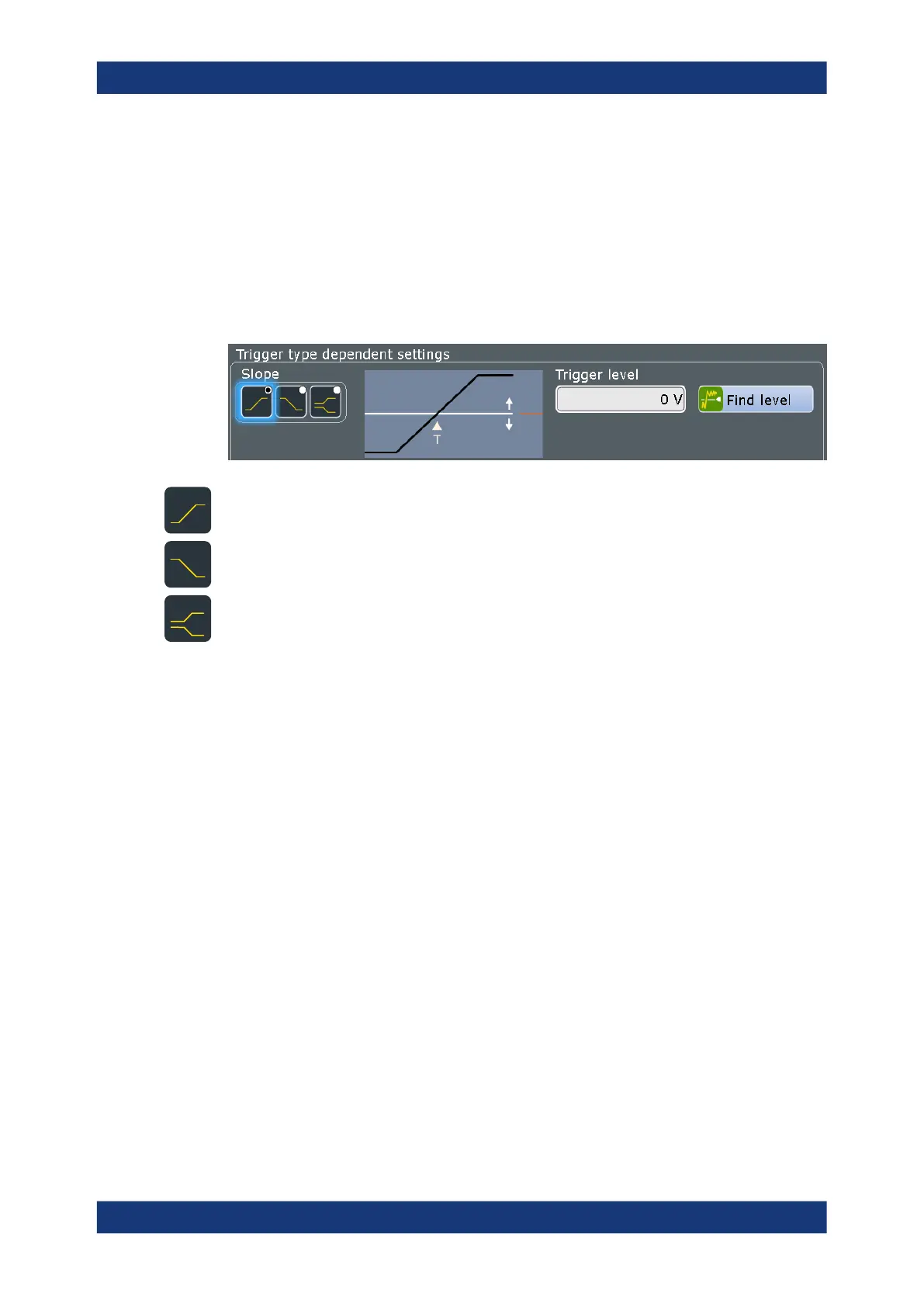Triggers
R&S
®
RTE
244User Manual 1326.1032.02 ─ 20
The edge trigger is the most common trigger type. It is well known from analog oscillo-
scopes; and you can use it for analog and digital signals.
The trigger condition is fulfilled when the signal from the trigger source passes the
specified threshold voltage in the specified direction (slope).
If the trigger source is a channel signal, the edge trigger uses the digitized trigger sig-
nal. This signal can be qualified and filtered with the DSP filter. If the trigger source is
the external trigger input, the coupling and filter for this signal is set directly in the trig-
ger setup.
Slope
Sets the edge type for the trigger condition.
"Positive"
Selects the rising edge, that is a positive voltage change.
"Negative"
Selects the falling edge, that is a negative voltage change.
"Both"
Selects the rising as well as the falling edge. This option is not availa-
ble if the trigger source is the external trigger input.
Remote command:
TRIGger<m>:EDGE:SLOPe on page 1168
TRIGger<m>:ANEDge:SLOPe on page 1170
TRIGger<m>:SLEW:SLOPe on page 1181
Trigger level
Sets the voltage level for the trigger condition. You can also drag the trigger level
marker on the display (TA or TB on the right edge of the display).
Remote command:
TRIGger<m>:LEVel<n>[:VALue] on page 1166
6.3.3 Glitch
Access: [TRIGGER] > "Setup" tab > "Type = Glitch"
The glitch trigger detects pulses shorter or longer than a specified time. It identifies
deviation from the nominal data rate and helps to analyze causes of even rare glitches
and their effects on other signals.
Trigger types

